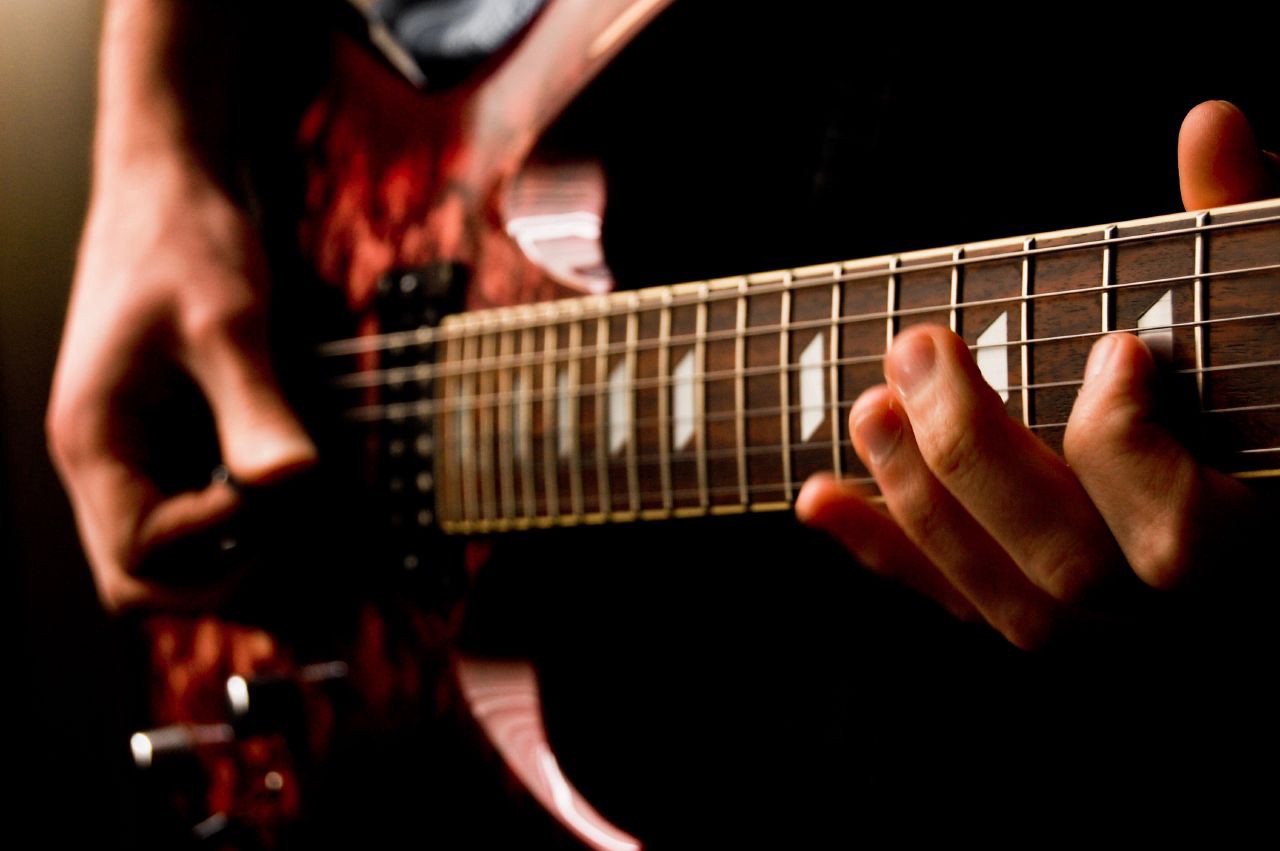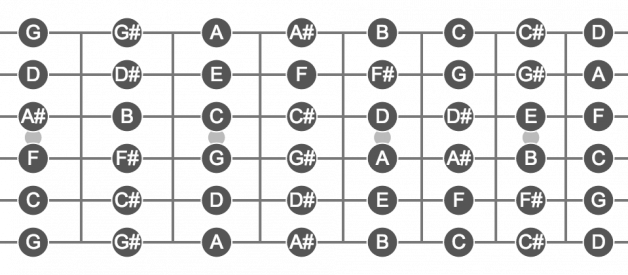A few mnemonics to quickly learn notes on a guitar fretboard

Introduction
There is a saying: if you want to ?understand? the guitar and the logic that drives the music, you?ll have to memorize the notes on the fretboard. And the sooner, the better.
I was stubbornly denying this necessity for a long time. I hoped that I would learn notes ?naturally? while learning songs ? this never happened (though I got to memorize a few notes here and there). I also hoped that I would learn notes while studying scales ? but instead I just learned the positions visually.
I was getting by just fine ? until I took a few guitar classes that explained the concepts of music theory and their application to the guitar. It became obvious that there?s no way to move on without knowledge of the fretboard.
So how would one learn all the notes on the fretboard? Well, by constant practice! There?s a nice application called tenuto (I?m not affiliated with Tenuto in any way ? but I liked it more then anything else), which I downloaded and started practicing daily. Things didn?t go well though: To me, a fretboard is just a grid of 72 notes ? all ?the same?, and it was pretty hard to memorize this non-structured information.
 That?s how a fretboard looked to me
That?s how a fretboard looked to me
The first step to minimize the workload is to focus on natural notes only: Knowing the locations of the natural notes, it?s easy to infer all the rest. This was an improvement, but it didn?t help me much.
 Natural-only notes on the fretboard
Natural-only notes on the fretboard
Clearly, I needed a system to refer to while thinking about the fretboard. It had to be a visual system, because it?s much easier to deal with visual terms rather then abstract ones.
The good news is that a guitar already has convenient visual ?anchors? ? certain frets are marked with ?dots?.
 Frets 3, 5, 7 ,9 and 12 are marked with dots
Frets 3, 5, 7 ,9 and 12 are marked with dots
The bad news is that googling the topic didn?t show much results. So I made up a few mnemonics that happen to work nicely and which I want to describe. Below are 4 simple steps that should help to quickly memorize a fretboard.
Step 1. 12 notes
Before doing anything else, learn by heart just these 12 notes:
- Memorize the standard tuning: E-A-D-G-B-E. Tuning defines the notes on the open strings. These not only come in handy all the time, but these are also the notes on the 12th fret, so you learn twice as much with less effort!
- Memorize the natural notes on the 6th string. These come in handy while playing barre chords, and these are also the notes of the 1st string! Again, twice the profit!
 12 super-useful notes
12 super-useful notes
Step 2. Grouping
Let?s take a closer look at the natural notes. There are 7 of them: C-D-E-F-G-A-B. Let?s combine them into two groups:
- CDE-group. This group has three natural notes ? C, D and E. I pronounce it as ?sidii? which resembles a ? and creates a good mnemonic.
- FGAB-group. This group has notes F, G, A and B, which are all the other natural notes.
Notice that between any two consecutive notes inside any group the distance is always a full tone (and exactly two frets on a guitar). For example, it?s a full tone between C ? D and G ?A. However, it takes only half a tone (and exactly one fret on a guitar) to cross the boundary between groups: Both E ?F and B ? C intervals are only half a tone.
 CDE-group and FGAB-group
CDE-group and FGAB-group
Now, instead of memorizing positions of distinct notes, we will be memorizing the positions of the CDE-group and the FGAB-group.
Step 3. FGAB-group
The largest of the two groups, the FGAB-group, is located in the very center of the guitar fretboard, right under the four dots labeled on the fret. Look at the picture below, and you?ll never forget again where the FGAB-group is on the fretboard!
 FGAB-group in the very center of the guitar
FGAB-group in the very center of the guitar
Step 4. CDE-groups
So the FGAB-group was easy to spot. What about the CDE-group? It turns out the CDE-group is nicely aligned with the FGAB-group visually, constructing a pretty and symmetric structure that resembles ?stairs?:
 The FGAB-group enclosed into two CDE-groups
The FGAB-group enclosed into two CDE-groups
These 10 notes already give a decent coverage for the fretboard. It would be nice, however, to have something on the 2nd string.
As you remember, 2nd string is an exception since it?s the only string with irregular tuning. That?s why the CDE-group on the 2nd string starts on the 1st fret ? which is also easy to remember.
 The CDE-group on 2nd string
The CDE-group on 2nd string
Summary
And that?s it! Having these notes in memory together with those learned by heart is enough to quickly navigate the fretboard.
 Notes sufficient to navigate the fretboard
Notes sufficient to navigate the fretboard
And if you don?t know what the note is here or there, just pick the closest natural note you have and count it up. Over time, you?ll ?make friends? with all the notes on the fretboard and will know them personally!
Happy playing!


